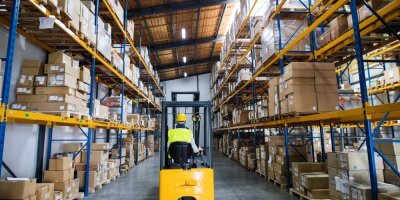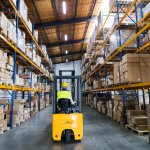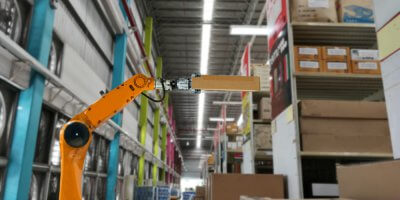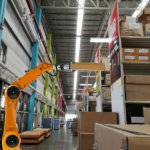
Versatile facilities help accommodate future business expansion plans. Source: AFP
Singapore’s growing digital economy needs smart warehouses
DIGITIZATION is picking up pace in Singapore’s warehouse aisles and factory floors.
However, not all warehouses in the country are ready to support the bleeding-edge technologies that businesses are adopting.
With much room for AI, robotics, and IoT within a warehouse, businesses will need to smarten up the facilities.
Since 2004, new business concepts that host retail activities on industrial premises have mushroomed in Singapore. Meaning, more businesses are running service-driven activities side-by-side with their production lines.
The congregation of several business operations in a single space plays a complementary role and helps with digital transformations.
After all, Singapore is Asia Pacific’s digital hub and new technologies are seeping into all spaces including industrial developments. Hence, the demand for smart warehouses is rising in the country.
Moving forward, smart warehouses will be able to support the new business concept of co-location and use it to drive digital transformations.
According to a recent report, businesses that are exploring more flexible facilities have three options:
#1 | Upgrading existing warehouses
Smartening up warehouses call for improved building specifications such as higher floor-loading capacity, higher electrical loading, and better fiber optic infrastructure.
Upgrades within a conventional warehouse are limited. Though, solutions for power supply and making buildings fiber-ready are easy fixes.
Find ways to improve existing warehouses, however, is the fastest option because it gives businesses more flexible facilities in just 6-9 months. It also costs the least when compared to relocation or redevelopment.
#2 | Relocating to existing warehouses with smart specifications
While physical building constraints are more restrictive, some businesses need more technology.
In view of cost and time requirements, it can be more efficient to relocate to an existing warehouse with smart specifications.
The search for a suitable existing warehouse will be time-consuming. However, it will be well worth business productivity hours as the buildings will be fitted with smart features already and operations can take off almost immediately.
#3 | Customizing a new smart warehouse
Although tearing down and redeveloping an entirely new smart warehouse can take up 24-30 months, it is the most ideal solution. However, businesses must remember that setting up more complex infrastructure may take more time.
Customizing a brand new facility is exciting because it also means that there aren’t any restrictions. The business will be able to incorporate the latest technological advancements as per operational demands.
It is also worth noting that businesses should invest in a facility design that is versatile to accommodate future expansion plans.
Being at the forefront of business is not about peppering digital solutions. It is about harnessing the power of technology to not only optimize existing processes but also expand business opportunities.
As a result, more smart warehouses are in demand in Singapore to accommodate the needs of the digital economy.
READ MORE
- Strategies for Democratizing GenAI
- The criticality of endpoint management in cybersecurity and operations
- Ethical AI: The renewed importance of safeguarding data and customer privacy in Generative AI applications
- How Japan balances AI-driven opportunities with cybersecurity needs
- Deploying SASE: Benchmarking your approach




